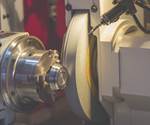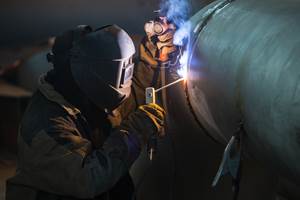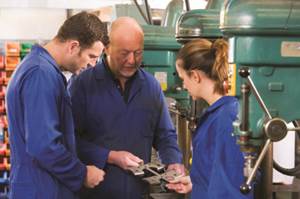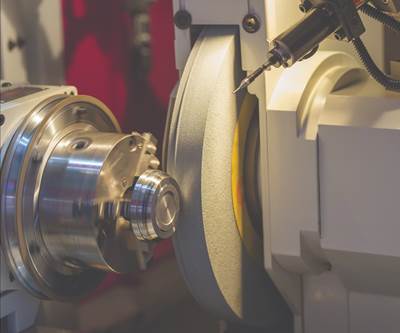Buying a Grinder: The Appeal and Construction of a Grinding Machine
The first step to buying a new grinding machine is understanding how it works. Learn more about the makeup of grinding machines, including multi-spindle machines.
Grinding is an abrasive machining process capable of achieving tolerances and surface finishes unattainable by any other process. When dimensional accuracy is unobtainable with milling, turning or electrical discharge machining (EDM), or when tolerances below ±0.0002 inch are required, grinding steps in. Grinding can repeatedly deliver accuracy as tight as ±0.00003 inch and do so repeatedly and reliably under proper conditions. Only honing can produce bore sizing tolerances below that which grinding can deliver.
Automotive, aerospace, medical, machine tools, die/mold, energy, tooling and general products are but a few industries that utilize grinding daily. The type of grinding machines available in the market vary by design, based on the specific parts or components being produced. Machine types include surface grinders, cylindrical, tool and cutter grinders, thread, gear, and cam and crankshaft grinders. Grinding machines can be further divided by the type of grinding they perform, such as surface, form, inner diameter (ID), outer diameter (OD), thread, plunge, centerless and through-feed grinding. Although manually operated toolroom grinders are still available, full CNC machines are now the norm, largely because of their high productivity and capability for unattended operation.
In addition to high accuracy, surface finish is a primary reason for using grinding. Typically, a milling machine can produce a surface finish of around 32 microinch Ra and a lathe can produce a surface finish of around 16 microinch Ra. Grinding is required for a surface finish of 16 microinch Ra and below. In fact, grinding can produce a super finish of 8 microinch Ra and below, and in some cases achieve a 2 microinch Ra, considered to be a micro finish. Super finishes are accomplished using two different, fine-grit abrasive wheels, as well as a polishing wheel when necessary.
When grinding for accuracy or surface finish, the amount of material left to remove after machining is usually somewhere around 0.010 inch. The finer the surface finish required, the finer the wheel grit or polishing wheel needed. The cycle time to achieve the finished part size also becomes longer. Ideally, the least amount of material should be left after machining to provide just enough stock for the grinding operation to clean up to finish size. This approach will provide the optimum cycle time for the grinding operation.
Machine Construction
On a surface grinder, workpieces are most often held with a magnetic chuck, vacuum chuck or special fixtures bolted directly to the table. For cylindrical grinding, the workpiece is normally held between centers, in a collet, with a three- or four-jaw chuck or on special fixtures. Tool and cutter grinders most often use precision collets.
To consistently produce part accuracy of 0.0002 inch and below, with super finishes under 16 microinches, grinding machines must be designed to control vibration and thermal growth. Machine bases are often constructed from granite or special epoxies to minimize thermal expansion and vibration. Any vibration in the machine will directly affect the surface finish of the part.
Naturally, grinding wheels create friction, which in turn creates heat. Heat from the workpiece may be transferred to the machine. Grinding heads, motors, drives, tailstocks, electronics and other moving components also create heat, which can influence the accuracy of the machine.
The latest machine designs provide stability and consistent dimensional accuracy by controlling the temperature of the various machine components. By circulating chilled, filtered coolant through the machine’s workhead, wheelhead, tailstock, and wheel dresser, each component of the machine is more likely to expand from heat at the same rate. Some machine designs also use fluid-cooled drives to ensure that any thermal growth is consistent throughout the entire machine.
The same chillers used in the coolant filtration system also flood the grinding wheel to control the thermal growth during operation. As an added measure, grinders are often placed in a thermally stable, temperature-controlled shop environment.
Multi-Spindle Configurations
Although most machines are designed with a single-spindle grinding head, universal machines, or what might be called multi-tasking machines, are designed with multiple grinding heads and multiple spindles. Depending on the requirements, machines can be equipped with up to four grinding spindles and a measuring probe.
Universal grinding machines provide high-precision machining for internal, external and face grinding of large or small workpieces. Multiple grinding wheels can be used (each with a different form, abrasive grit size or bond) to rough grind, finish grind, and polish—all in one setup. For example, multiple ODs can be ground, then the machine can switch to a different spindle by using a turret and precision Hirth coupling to auto index 0 to 180 degrees, thereby enabling an ID spindle to grind internal features. Another spindle might then be used to finish-grind the part face.
Related Content
7 CNC Parameters You Should Know
Parameters tell the CNC every little detail about the specific machine tool being used, and how all CNC features and functions are to be utilized.
Read MoreHow To Calibrate Your Calipers
If you’re interested in calibrating your own digital, dial or Vernier calipers, here are some steps to take to make sure it goes off without a hitch.
Read MoreSelecting The Right Welder
Many machine shops, on occasion, have a need for welding. It may be for maintenance purposes, repair or to fill the odd contract. This story is a welding process primer for those shops whose main business isn't welding but need to know some basics.
Read MoreUnderstanding The Four Major Behavioral Styles
Companies today are expanding the role of teams in the workplace in an effort to empower employees and improve organizational effectiveness. The more we try to work as a team, the more important it becomes to recognize that people exhibit different behavioral styles.
Read MoreRead Next
Buying a Grinder: The Abrasive Process
The prospective buyer of a new grinding machine should be aware of the ins and outs of the abrasive process, how abrasive bonds work and the various forms of wheel dressing.
Read MoreThe Cut Scene: The Finer Details of Large-Format Machining
Small details and features can have an outsized impact on large parts, such as Barbco’s collapsible utility drill head.
Read More3 Mistakes That Cause CNC Programs to Fail
Despite enhancements to manufacturing technology, there are still issues today that can cause programs to fail. These failures can cause lost time, scrapped parts, damaged machines and even injured operators.
Read More















.png;maxWidth=300;quality=90)









